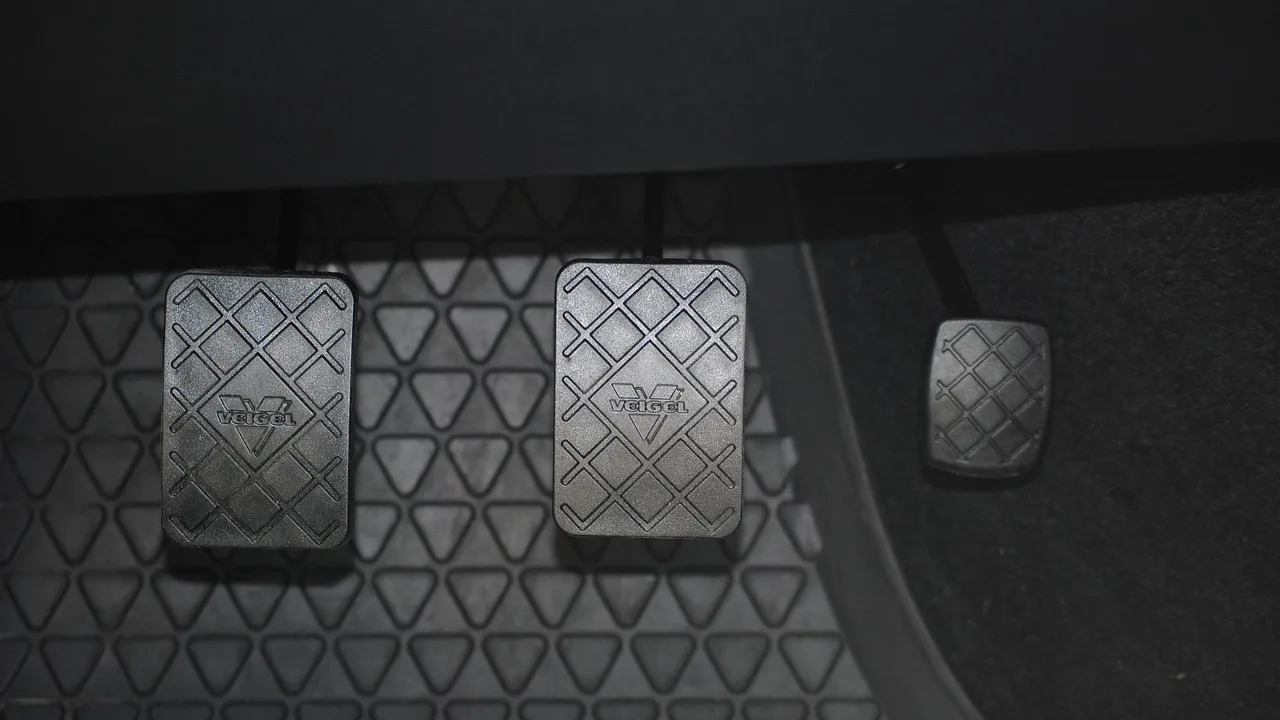Home »
When it comes to automobile engineering, the clutch is essential to the transfer of power from the engine to the transmission system. It facilitates seamless gear changes, allowing vehicles to accelerate, decelerate, and maneuver effectively. The clutch pedal, clutch disc, pressure plate, release bearing, and flywheel are some of the parts that make up the clutch mechanism. These parts cooperate to control the transfer of power.
In driving manual transmission vehicles, drivers encounter situations where they must decide between engaging the clutch partially (half clutch) or fully disengaging it (full clutch). This decision significantly influences driving performance, fuel efficiency, and overall vehicle operation. In this comprehensive guide, we delve into the nuanced applications of half clutch and full clutch, elucidating their respective purposes and benefits.
Half Clutch
Half clutch, also known as partial clutch engagement, involves partially engaging the clutch pedal while transitioning between gears. This technique enables drivers to modulate power delivery to the transmission system, offering enhanced control and smoother gear shifts. Understanding when to use a half-clutch is crucial for optimizing driving dynamics and minimizing wear on clutch components.
Starting from a Standstill:
One of the primary scenarios where half clutch is indispensable is during the initial acceleration from a standstill. As the vehicle transitions from rest to motion, engaging the clutch halfway allows for gradual power transfer, preventing abrupt jerks or stalling.
Low-Speed Maneuvering:
In congested traffic or tight parking spaces, drivers often encounter situations that demand precise low-speed maneuvering. Half clutch facilitates smooth, controlled movement by enabling drivers to modulate engine power while engaging the transmission. The clutch pedal, clutch disc, pressure plate, release bearing, and flywheel are some of the parts that make up the clutch mechanism. These parts cooperate to control the transfer of power.
Smooth Gear Changes:
Smooth gear changes are essential to maximize driving comfort and performance. When upshifting or downshifting gears, engaging the half-clutch allows for synchronized rotation between the engine and transmission, minimizing gear clash and reducing driveline shock. This gentle modulation of clutch engagement promotes smoother gear changes, enhancing the overall driving experience and prolonging clutch longevity.
Full Clutch
While half clutch offers enhanced control and modulation, there are instances where fully disengaging the clutch pedal (full clutch) is necessary to facilitate seamless gear engagement and deceleration. Understanding the applications of full clutch empowers drivers to execute precise maneuvers and optimize vehicle performance across diverse driving conditions.
Gear Changes at High Speeds:
During high-speed driving or highway cruising, executing swift gear changes is essential for maintaining momentum and optimizing fuel efficiency. Full clutch engagement enables rapid disengagement and engagement of gears, facilitating seamless transitions without driveline shock or gear clash. Through the temporary disengagement of the clutch pedal, drivers can shift gears smoothly, guaranteeing continuous power supply and improved driving dynamics.
- Audi GT50 Concept: A Loud Reminder of Why Car Enthusiasts Fell in Love With Audi
- Nearly 30% of UK Drivers Believe Car Tax Should Be Based on Mileage — Survey
- Why Planes and Boats Escaped the Luxury Tax But Cars Didn’t
- Australia’s Headlight Confusion: Authorities Warn Drivers After Viral $250 Headlight Rule Goes Wild Online
- 2025 Hyundai Venue Facelift Launched in India – Full Details, Variants, and Price
Emergency Braking:
In emergency braking situations or sudden deceleration, fully disengaging the clutch pedal allows drivers to rapidly disengage engine power from the transmission, preventing drivetrain binding or engine stalling. Without worrying about stalling the engine or stressing the driveline, drivers may concentrate on providing braking force by disengaging the clutch. This decisive action enhances safety and responsiveness, enabling drivers to react swiftly to unforeseen hazards or obstacles.
Stationary Operations:
When stationary for extended periods, such as at traffic lights or railway crossings, fully disengaging the clutch pedal relieves pressure on clutch components and reduces driver fatigue. By resting the foot on the clutch pedal, drivers can disengage the clutch fully, ensuring minimal wear on clutch friction surfaces and release mechanisms. This proactive approach to clutch management promotes longevity and reliability, enhancing overall vehicle durability and performance.
Conclusion
In summary, the judicious application of half-clutch and full-clutch techniques is integral to optimizing driving dynamics, enhancing vehicle control, and prolonging clutch lifespan. By understanding the nuanced scenarios where each technique is most beneficial, drivers can navigate diverse driving conditions with confidence and finesse. Whether negotiating tight urban streets, traversing challenging terrain, or executing high-speed maneuvers, mastering clutch modulation empowers drivers to elevate their driving experience while promoting mechanical efficiency and reliability.
Through proactive clutch management and disciplined driving practices, drivers can unlock the full potential of manual transmission vehicles, maximizing performance, fuel efficiency, and safety across every mile of the journey. Embracing the art of clutch control is not merely a skill but a testament to the symbiotic relationship between driver and machine, where precision, intuition, and mechanical synergy converge to redefine the boundaries of automotive excellence.
